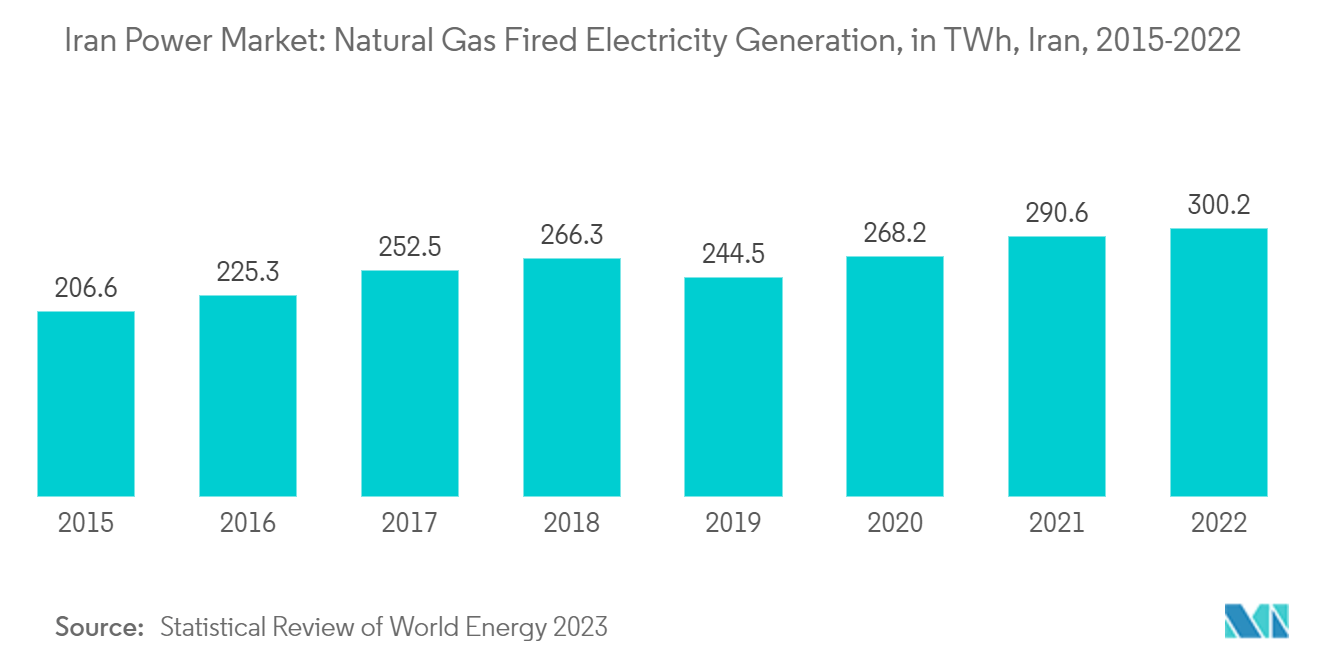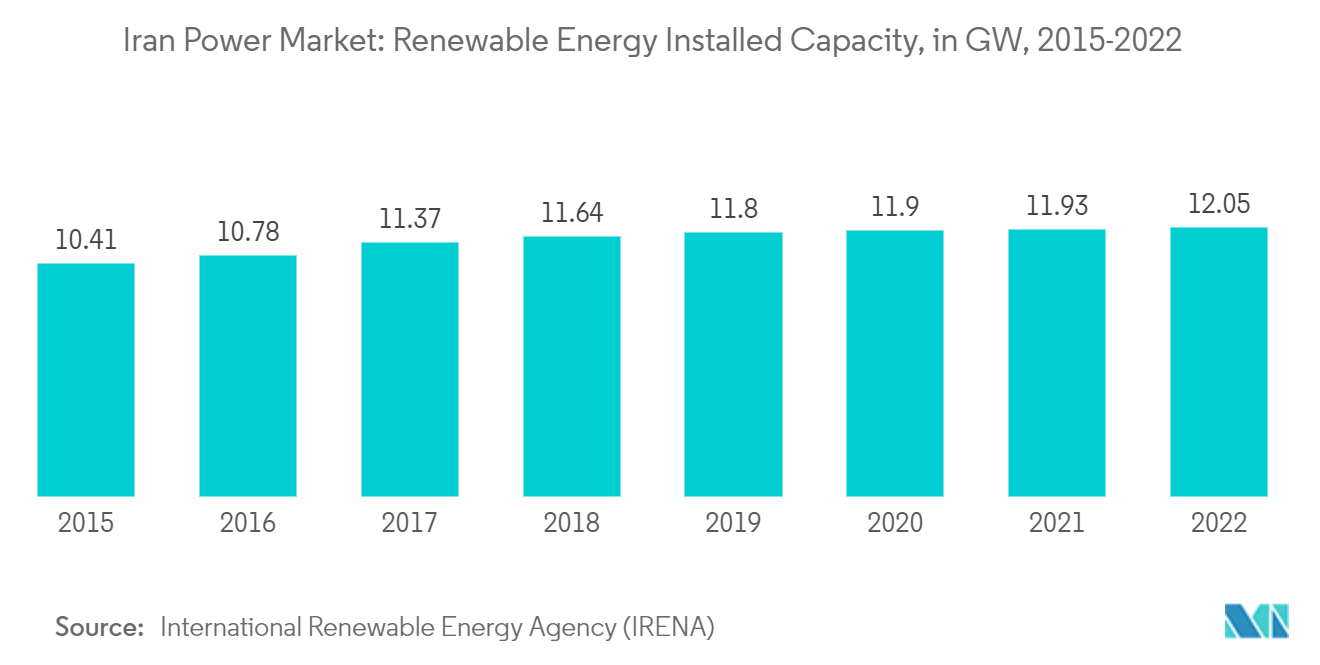Market Trends of Iran Power Industry
Natural Gas Expected to Dominate the Market
- Iran stands in second place in the world for natural gas reserves, accounting for around 1133 trillion cubic feet of proved reserves. Around 85% of electricity in the country is generated from thermal power technology, either in the form of combined cycle power plants, gas-based power plants, or a small ratio of oil-based power generation.
- Iran’s gas-fired electricity generation capacity reached 300.2 TWh in 2022. Iran’s total power generation capacity currently stands at about 85,000 MW, more than 90 percent of which is supplied by thermal power plants. Currently, a total of 478 thermal power plants are operating throughout Iran, including both gas power plants and combined cycle plants.
- In 2022, the capacity of 286 power plants in the country increased by about 1,035 megawatts with the implementation of plans to increase the generation capacity of gas and combined cycle units and remove the limitation of thermal power plants. Over two-thirds of Iran’s thermal power plants are owned and operated by the country’s private sector, and private owners are currently generating nearly 67 percent of Iran’s thermal power.
- In February 2023, two more units with a capacity of 162 MW at the Mahtab Kavir plant (484 MW) in Zarand County in Kerman Province started producing electricity. The first unit of the Mahtab Kavir plant was connected to the grid in June 2022. The natural gas-fired power plant supports the electricity supply for three provinces—Kerman, Hormozgan, and Sistan-Baluchestan- in the country’s southern and southeastern regions.
- Such developments are expected to accelerate gas-based power generation in the country over the coming years.

Growth of Renewables Expected to Drive the Market
- Iran's renewable energy potential largely includes solar energy, hydroenergy, geothermal, and a trivial ratio of wind and bioenergy. As of 2022, around 12.04 GW of renewable capacity was installed in the country, which has increased by 15.69% compared to 10.411 GW installed in 2015.
- According to the Iranian government's 6th Development Plan, the government aims to install a renewable capacity of 7,500 MW of renewable energy by 2030. The government has set a target to increase its renewable energy share of electricity production by up to 12% by 2030.
- Furthermore, the government aims to become a net-zero-emission economy by 2050. These policies are expected to increase investment in solar energy projects, which is expected to lead to higher sales of solar PV inverters in the country during the forecast period.
- In July 2023, Iran’s Renewable Energy and Energy Efficiency Organisation announced that the country is set to construct a new 1,000-MW solar array in Qazvin. This initiative marks the beginning of a series of “Solar Parks” in the country and is expected to double the renewable energy output once fully operational.
- Such developments are expected to offer robust growth for the renewable sources of power generation in the country.


